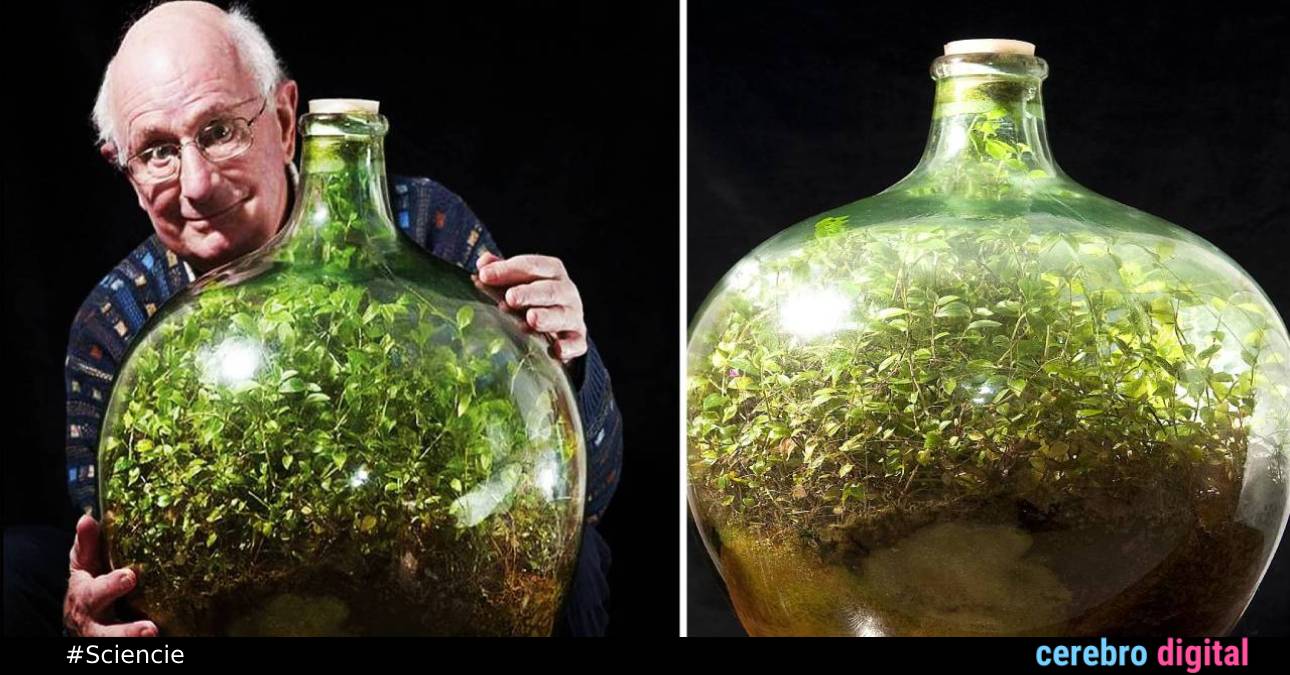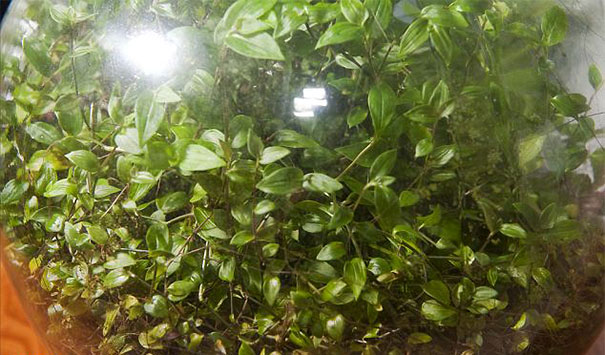
In 1960, David Latimer’s curiosity led him to plant seeds in a glass bottle. Little did he know that this simple act would give rise to a remarkable, self-contained miniature ecosystem, now known as “the world’s oldest terrarium.”
Surprisingly, after all these years, David’s sealed bottle garden continues to flourish and thrive. The plants are vibrant and healthy, despite not having been watered since 1972.
A Unique and Miniature Ecosystem

In 1960, David initiated his terrarium by adding a quarter-liter of water and compost to a ten-gallon bottle. He introduced tradescantia seeds, sealed it, and placed it in a sunny corner, allowing nature to take its course through photosynthesis.
In 1972, Latimer briefly opened the bottle to water the plants, but since then, the miniature ecosystem has remained sealed, with no contact with fresh air or water.
This extraordinary resilience is possible due to the self-sustaining ecosystem generated by sunlight. Latimer explained in an interview with the Daily Mail:
“The bottle is about 1.8 meters away from a window and gets some sunlight. The plants grow towards the light, so I occasionally turn the bottle to make sure they grow evenly. Apart from that, it requires minimal maintenance. I’ve never pruned it; it seems to have reached the limits of the bottle.”
For 27 years, this sealed garden has occupied the same spot in the Latimer home in Cranleigh, Surrey, England. It gained international attention when Chris Beardshaw featured it on BBC Radio 4’s Gardeners Question Time. Chris, a garden designer and television presenter, recognized the sealed garden as a remarkable illustration of plant life cycles and recycling capabilities. He noted that NASA is exploring similar methods to sustain plants in space:
“Plants are excellent air purifiers, removing pollutants, allowing a space station to be self-sufficient,” he explained. “This is an excellent example of how innovative plants are and how they thrive when given the opportunity.”
Cultivating Bottle Gardens

The success of the miniature ecosystem lies in creating a self-sustaining environment through photosynthesis and nutrient recycling.
The only necessary input is external light, providing energy for growth and sustenance. Light absorbed by chlorophyll is stored as ATP for energy. The remaining light helps the plant release oxygen by transforming carbon dioxide into carbohydrates through chemical reactions.
To break down organic matter like fallen leaves, the miniature ecosystem employs cellular respiration facilitated by bacteria. These bacteria use residual oxygen and release carbon dioxide, benefiting plant growth.
Similarly, during the absence of sunlight, the plant uses cellular respiration to break down stored nutrients. Additionally, water is continuously recycled, absorbed by the plant’s roots, released into the air through transpiration, and then condensed back into the soil, initiating a continuous cycle.
While some remain skeptical, including organic gardener Bob Flowerdew, surprisingly, David Latimer shares a similar sentiment. He acknowledges that the sealed bottle garden may appear monotonous but is intrigued enough to see how long it can endure.
David intends to pass this ongoing experiment to his children. If they show no interest, he plans to donate it to the Royal Horticultural Society in London, England.
If this intrigues you, there are numerous online resources for creating your own miniature ecosystem. Tutorials can guide you in creating your own bottle terrarium—a simple, almost maintenance-free, and captivating experiment that anyone can undertake.
